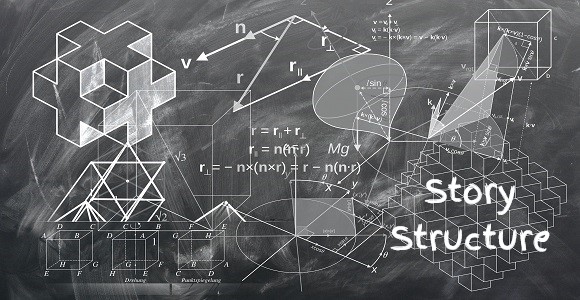
Story Structure | What Is Story Structure?
In the previous installment of this series we asked the question, “Does Story Structure Exist?” Seems simple enough, but with all the variations in the way stories are assembled – who is in them, what they do, and how all that turns into a message – it isn’t unreasonable to wonder if stories spring from the mysteries of our common humanity or if there is some organizing principal behind it all.
At the end of that exploration, we left the discussion with the conclusion that some sort of structure probably does exist, but if so, what exactly is it? And that is the subject of this second installment.
So what is story structure?
First let’s ask “What is a story, ” since it pretty hard to describe how something is structured if you haven’t defined what the thing is.
For our purposes, let’s define a story as a map for solving problems, attaining goals, and navigating the rocky shoals of human relationships all the while trying to get a grip on our own feelings.
Now I know that’s really fluffy and also rather wide ranging, but whenever you are starting a new area of study, it’s best to begin with some broad outlines to get a sense of the thing and then focus and refine that later as you get more into the nitty gritty.
So, let’s see story as a map (for now) that documents the course some people took to try and improve things, and how well they did is determined by where they ended up. That’s the message of a story, and getting there is the experience of the story.
When all is said and done, the story has proven to be a guidebook provided by the author that has conveyed to the reader a means for dealing with all these issues – what to do and what not to do, and has also given the reader a senses of what it is like to go through it all. In other words, “When it feels like this, and things look like that, here’s how you get through it.”
We can all relate to stories – all of us: any age, culture, gender, or belief system. Intuitively, we know if some element of the story -a choice a character makes or a plot even – rings true to life or comes off as a contrived clinker.
How many times have you thought of a story, “Nobody would do that!” or “C’mon, that doesn’t even make sense.” What engenders those comments is our innate sense of story structure.
When a story veers off course dramatically or, worst of all, breaks structure completely, we all feel it, even though few of us are thinking about structure at the time, and even fewer of us to define exactly what was bent or broken.
And the amazing thing is that even though the form of storytelling varies from culture to culture, the deep underlying nature of the structure beneath the storytelling is the same from culture to culture.
Why do we all have that built-in structure sensor? Simple. We all think with the same brain. Our brains are essentially identical. We all experience love and hate, longing and fearing, happiness and sadness, faith and disbelief. We just feel those emotions about different things based on our unique individual experience.
Story structure connects with our underlying psychology – the part of us that is the same from person to person – our common operating system. Storytelling deals with the subject matter and style, and that varies from person to person – each individual’s unique life experience – our programming.
Nature vs. Nurture. Both are at play. When it comes to story structure, that’s the nature part. When it comes to the storytelling, that’s the nurture.
So, in a sense, you might say that story structure is the psychology of the story, and storytelling is the personality of the story, as if the story were something of a super character with its own psychology and own personality.
And you know, from one perspective, that’s exactly what it is, as we shall see in the next installment of this series.
For now, let’s settle on this temporary simplification: Story structure is the underlying psychology of the story.
Next installment, we’ll develop a more clear understanding of what story structure is by revealing how it came to be.
Until then, May the Muse be with you!
Melanie Anne Phillips
Co-creator, Dramatica

